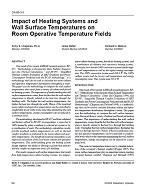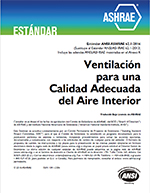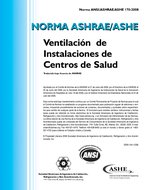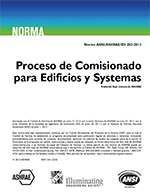Description
One result of two recent ASHRAE research projects, RP-657, “Methodology to Incorporate Mean Radiant Temperature into Thermal Calculations,” and RP-907, “Simplified Thermal Comfort Evaluation of MRT Gradients and Power Comsumption Predicted with the BCAP Methodology,” is a methodology that can be used to calculate the mean radiant and operative temperature distributions throughout a room. This paper uses the methodology to compare the wall surface temperatures that result from a variety of radiant and forced air heating systems. The importance of understanding the wall surface temperatures comes from the fact that the wall surface temperature is directly related to the heat loss through the building walls. The higher the wall surface temperatures, the higher the heat loss through the walls. Hence, if the localized mean radiant and operative temperatures can be controlled to comfortable levels while at the same time minimizing the wall surface temperatures, energy consumption can be reduced to a minimum level. The methodology developed in RP-657 and then validated and further refined in RP-907 accommodates a room that is 100% heated by either a radiant or a forced air system or by a combination of each. The methodology calculation results provide localized surface temperatures as well as thermal comfort gradients as indicated by the mean radiant and operative temperatures. The benefit of localized calculations is an improved calculation of the local mean radiant and operative temperatures. This understanding gives the heating system design engineer the ability to develop a system that delivers thermal comfort to important areas of a building. The results compare wall surface temperatures that result from high-temperature radiant heating systems, low-temper- ature radiant heating systems, forced-air heating systems, and a combination of radiative and convective heating systems. The results show that the 100% convective system had the highest wall temperature as well as the highest energy consumption. The 100% convective system used 419.4 W. The 100% radiant system had the lowest wall temperature and energy consumption rates. This system used 393.4 W.
Units: Dual
Citation: Symposium, ASHRAE Transactions, vol. 106, pt. 1
Product Details
- Published:
- 2000
- Number of Pages:
- 9
- File Size:
- 1 file , 160 KB
- Product Code(s):
- D-7347




